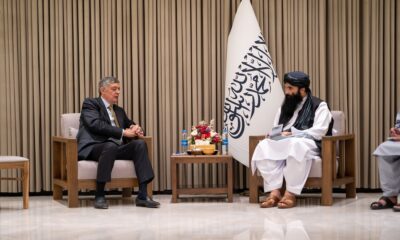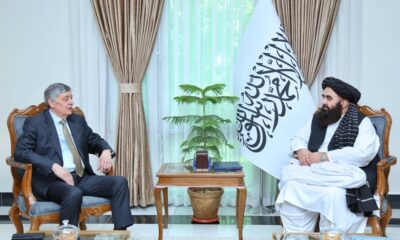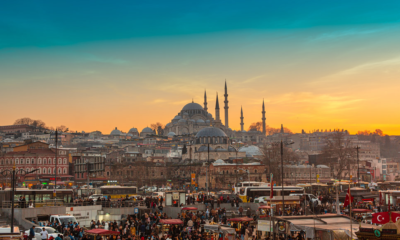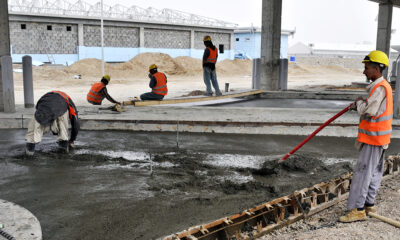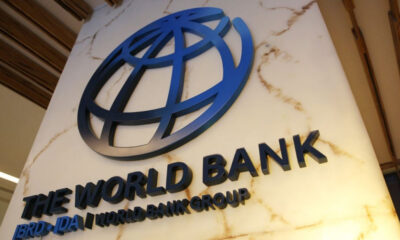World
Global hunger crisis deepens as major nations skimp on aid
The U.S. plays the leading role in preventing and combating starvation across the world. It provided $64.5 billion in humanitarian aid over the last five years. That was at least 38% of the total such contributions recorded by the U.N.
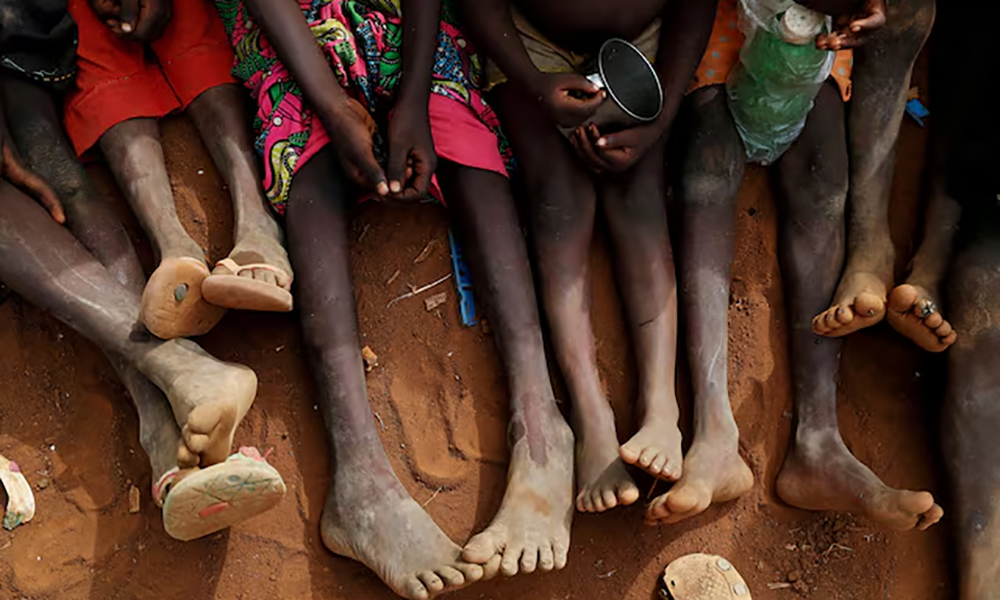
It’s a simple but brutal equation: The number of people going hungry or otherwise struggling around the world is rising, while the amount of money the world’s wealthiest nations are contributing toward helping them is dropping, Reuters reported.
The result: The United Nations says that, at best, it will be able to raise enough money to help about 60% of the 307 million people it predicts will need humanitarian aid next year. That means at least 117 million people won’t get food or other assistance in 2025.
The U.N. also will end 2024 having raised about 46% of the $49.6 billion it sought for humanitarian aid across the globe, its own data shows. It’s the second year in a row the world body has raised less than half of what it sought. The shortfall has forced humanitarian agencies to make agonizing decisions, such as slashing rations for the hungry and cutting the number of people eligible for aid.
The consequences are being felt in places like Syria, where the World Food Program (WFP), the U.N.’s main food distributor, used to feed 6 million people. Eyeing its projections for aid donations earlier this year, the WFP cut the number it hoped to help there to about 1 million people, said Rania Dagash-Kamara, the organization’s assistant executive director for partnerships and resource mobilization.
Dagash-Kamara visited the WFP’s Syria staff in March. “Their line was, ‘We are at this point taking from the hungry to feed the starving,’” she said in an interview.
U.N. officials see few reasons for optimism at a time of widespread conflict, political unrest and extreme weather, all factors that stoke famine. “We have been forced to scale back appeals to those in most dire need,” Tom Fletcher, U.N. under-secretary-general for humanitarian affairs and emergency relief coordinator, told Reuters.
The funding gap
Conflict, extreme weather and soaring inflation have left growing numbers of people in need of humanitarian aid. Also increasing is the gap between the funding the U.N. seeks for humanitarian relief and the amount donors actually provide, read the report.
Financial pressures and shifting domestic politics are reshaping some wealthy nations’ decisions about where and how much to give. One of the U.N.’s largest donors – Germany – already shaved $500 million in funding from 2023 to 2024 as part of general belt tightening. The country’s cabinet has recommended another $1 billion reduction in humanitarian aid for 2025. A new parliament will decide next year’s spending plan after the federal election in February.
Humanitarian organizations also are watching to see what U.S. President-elect Donald Trump proposes after he begins his second term in January.
Trump advisers have not said how he will approach humanitarian aid, but he sought to slash U.S. funding in his first term. And he has hired advisers who say there is room for cuts in foreign aid.
The U.S. plays the leading role in preventing and combating starvation across the world. It provided $64.5 billion in humanitarian aid over the last five years. That was at least 38% of the total such contributions recorded by the U.N.
SHARING THE WEALTH
The majority of humanitarian funding comes from just three wealthy donors: the U.S., Germany and the European Commission. They provided 58% of the $170 billion recorded by the U.N. in response to crises from 2020 to 2024.
Three other powers – China, Russia and India – collectively contributed less than 1% of U.N.-tracked humanitarian funding over the same period, according to a Reuters review of U.N. contributions data.
The inability to close the funding gap is one of the major reasons the global system for tackling hunger and preventing famine is under enormous strain. The lack of adequate funding – coupled with the logistical hurdles of assessing need and delivering food aid in conflict zones, where many of the worst hunger crises exist – is taxing efforts to get enough aid to the starving. Almost 282 million people in 59 countries and territories were facing high levels of acute food insecurity in 2023. Reuters is documenting the global hunger-relief crisis in a series of reports, including from hard-hit Sudan, Myanmar and Afghanistan, Reuters reported.
The failure of major nations to pull their weight in funding for global initiatives has been a persistent Trump complaint. Project 2025, a set of policy proposals drawn up by Trump backers for his second term, calls on humanitarian agencies to work harder to collect more funding from other donors and says this should be a condition for additional U.S. aid.
On the campaign trail, Trump tried to distance himself from the controversial Project 2025 blueprint. But after winning the election, he chose one of its key architects, Russell Vought, to run the U.S. Office of Management and Budget, a powerful body that helps decide presidential priorities and how to pay for them. For secretary of state, the top U.S. diplomat, he tapped Florida Senator Marco Rubio, who has a record of supporting foreign aid.
Project 2025 makes particular note of conflict – the very factor driving most of today’s worst hunger crises.
“Humanitarian aid is sustaining war economies, creating financial incentives for warring parties to continue fighting, discouraging governments from reforming, and propping up malign regimes,” the blueprint says. It calls for deep cuts in international disaster aid by ending programs in places controlled by “malign actors.”
Billionaire Elon Musk has been tapped by Trump to co-lead the Department of Government Efficiency (DOGE), a new body that will examine waste in government spending. Musk said this month on his social media platform, X, that DOGE would look at foreign aid.
The aid cuts Trump sought in his first term didn’t pass Congress, which controls such spending. Senator Lindsey Graham, a South Carolina Republican and close Trump ally on many issues, will chair the Senate committee that oversees the budget. In 2019, he called “insane” and “short-sighted” a Trump proposal to cut the budget for foreign aid and diplomacy by 23%.
Graham, Vought, Rubio and Musk did not respond to questions for this report.
OLYMPICS AND SPACESHIPS
So many people have been hungry in so many places for so long that humanitarian agencies say fatigue has set in among donors. Donors receive appeal after appeal for help, yet have limits on what they can give. This has led to growing frustration with major countries they view as not doing their share to help.
Jan Egeland was U.N. humanitarian chief from 2003 to 2006 and now heads the Norwegian Refugee Council, a nongovernmental relief group. Egeland said it is “crazy” that a tiny country like Norway is among the top funders of humanitarian aid. With a 2023 gross national income (GNI) less than 2% the size of America’s, Norway ranked seventh among governments who gave to the U.N. that year, according to a Reuters review of U.N. aid data. It provided more than $1 billion.
Two of the five biggest economies – China and India – gave a tiny fraction as much.
China ranked 32nd among governments in 2023, contributing $11.5 million in humanitarian aid. It has the world’s second-largest GNI.
India ranked 35th that year, with $6.4 million in humanitarian aid. It has the fifth-largest GNI.
How aid stacks up
The United States and Germany were top donors in 2023.
Norway gave the most in aid when adjusted for the contributing nation’s gross national income.
Egeland noted that China and India each invested far more in the type of initiatives that draw world attention. Beijing spent billions hosting the 2022 Winter Olympics, and India spent $75 million in 2023 to land a spaceship on the moon.
“How come there is not more interest in helping starving children in the rest of the world?” Egeland said. “These are not developing countries anymore. They are having Olympics … They are having spaceships that many of the other donors never could dream of.”
Liu Pengyu, spokesman for the Chinese embassy in Washington, said China has always supported the WFP. He noted that it feeds 1.4 billion people within its own borders. “This in itself is a major contribution to world food security,” he said.
India’s ambassador to the U.N. and its Ministry of External Affairs did not respond to questions for this report.
To analyze giving patterns, Reuters used data from the U.N.’s Financial Tracking Service, which records humanitarian aid. The service primarily catalogs money for U.N. initiatives and relies on voluntary reporting. It doesn’t list aid funneled elsewhere, including an additional $255 million that Saudi Arabia reported giving this year through its own aid organization, the King Salman Humanitarian Aid & Relief Centre.
RESTRICTIONS AND DELAYS
When aid does come, it is sometimes late, and with strings attached, making it hard for humanitarian organizations to respond flexibly to crises.
Aid tends to arrive “when the animals are dead, people are on the move, and children are malnourished,” said Julia Steets, director of the Global Public Policy Institute, a think tank based in Berlin.
Steets has helped conduct several U.N.-sponsored evaluations of humanitarian responses. She led one after a drought-driven hunger crisis gripped Ethiopia from 2015 to 2018. The report concluded that while famine was avoided, funding came too late to prevent a huge spike in severe acute malnutrition in children. Research shows that malnutrition can have long-term effects on children, including stunted growth and reduced cognitive abilities.
Further frustrating relief efforts are conditions that powerful donors place on aid. Donors dictate details to humanitarian agencies, down to where food will go. They sometimes limit funding to specific U.N. entities or nongovernmental organizations. They often require that some money be spent on branding, such as displaying donors’ logos on tents, toilets and backpacks.
Aid workers say such earmarking has forced them to cut rations or aid altogether.
The U.S. has a long-standing practice of placing restrictions on nearly all of its contributions to the World Food Program, one of the largest providers of humanitarian food assistance. More than 99% of U.S. donations to the WFP carried restrictions in each of the last 10 years, according to WFP data reviewed by Reuters.
Asked about the aid conditions, a spokesperson for the U.S. Agency for International Development, which oversees American humanitarian spending, said the agency acts “in accordance with the obligations and standards required by Congress.”
Those standards aim to improve the efficiency and effectiveness of humanitarian aid, the spokesperson said, and aid conditions are meant to maintain “an appropriate measure of oversight to ensure the responsible use of U.S. taxpayer funds.”
Some current and former officials with donor organizations defend their restrictions. They point to theft and corruption that have plagued the global food aid system.
In Ethiopia, as Reuters has detailed, massive amounts of aid from the U.N. World Food Program were diverted , in part because of the organization’s lax administrative controls. An internal WFP report on Sudan identified a range of problems in the organization’s response to an extreme hunger crisis there, Reuters reported earlier this month, including an inability to react adequately and what the report described as “anti-fraud challenges.”
The U.N. has a “zero tolerance policy” toward “interferences” that disrupt aid and is working with donors to manage risks, said Jens Laerke, spokesperson for the U.N. Office for the Coordination of Humanitarian Affairs.
Solving the U.N.’s broader fundraising challenges will require a change in its business model, said Martin Griffiths, who stepped down as U.N. humanitarian relief chief in June. “Obviously, what we need to do is to have a different source of funding.”
In 2014, Antonio Guterres, now the U.N.’s secretary-general and then head of its refugee agency, suggested a major change that would charge U.N. member states fees to fund humanitarian initiatives, Reuters reported.
The U.N.’s budget and peacekeeping missions already are funded by a fee system. Such funding would offer humanitarian agencies more flexibility in responding to need.
The U.N. explored Guterres’ idea in 2015. But donor countries preferred the current system, which lets them decide case by case where to send contributions, according to a U.N. report on the proposal.
Laerke said the U.N. is working to diversify its donor base.
“We can’t just rely on the same club of donors, generous as they are and appreciative as we are of them,” Laerke said.
World
Ukraine ready to hold talks with Russia once ceasefire in place, Zelenskiy says
Zelenskiy said he would be happy to meet U.S. President Donald Trump later this week when they attend the funeral of Pope Francis along with other world leaders.
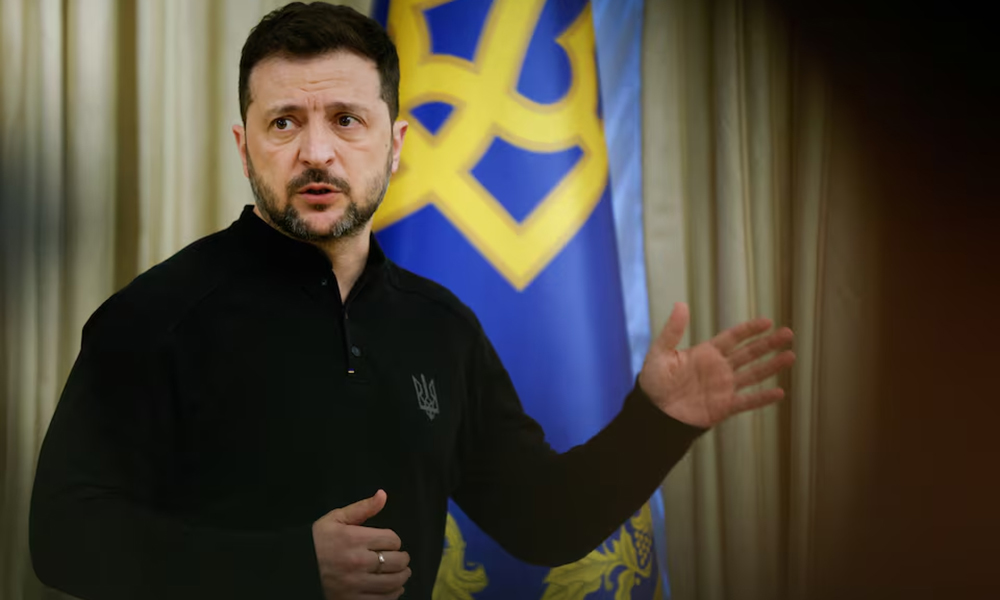
President Volodymyr Zelenskiy said on Tuesday that Ukraine would be ready to hold talks with Russia in any format once a ceasefire deal is in place and the fighting has stopped, Reuters reported.
The Ukrainian leader also told reporters at a briefing that a Ukrainian delegation meeting officials from Western countries in London on Wednesday would have a mandate to discuss a full or partial ceasefire.
“We are ready to record that after a ceasefire, we are ready to sit down in any format so that there are no dead ends,” Zelenskiy said in the presidential office in Kyiv.
“It will not be possible to agree on everything quickly,” he warned, noting numerous highly complex issues such as territory, security guarantees and Ukraine’s membership in the NATO military alliance.
He said that Ukraine would not recognise Moscow’s de jure control of the peninsula of Crimea as part of any deal as such a move would go against the Ukrainian constitution. Russia seized Crimea in 2014 and later annexed it.
Ukraine, he said, would be ready to partner with the United States to restore the work of the vast, Russian-occupied Zaporizhzhia nuclear power plant. There had been no such formal proposal from Washington about that, however, he added.
The talks in London, which are set to bring together officials from the United States, Britain, France, Germany and Ukraine, come amid a flurry of U.S.-led diplomatic efforts to find a way to end Russia’s war with Ukraine, read the report.
In an apparent change of plan, U.S. Secretary of State Marco Rubio will not be attending the talks in London, a State Department spokesperson said on Tuesday, adding that Washington’s Ukraine envoy General Keith Kellogg would attend.
Zelenskiy said he would be happy to meet U.S. President Donald Trump later this week when they attend the funeral of Pope Francis along with other world leaders.
Ukraine, Zelenskiy said, would also step up its diplomatic outreach this week and that he would meet South African President Cyril Ramaphosa, as well as the leaders of Spain, Poland and the Czech Republic.
World
Putin says he is open to direct peace talks with Ukraine
Zelenskiy, in his nightly video address, said Ukraine stood by its proposal for an end to attacks on civilian targets and was ready for any form of discussion to achieve it.

Russian President Vladimir Putin proposed on Monday bilateral talks with Ukraine for the first time since the early days of the war, and his Ukrainian counterpart Volodymyr Zelenskiy said Kyiv was eager to discuss a halt to attacks on civilian targets, Reuters reported.
While Zelenskiy did not respond directly to Putin’s proposal, he emphasized in his nightly video address that Ukraine “was ready for any conversation” about a ceasefire that would stop strikes on civilians.
The two leaders face pressure from the United States, which has threatened to walk away from its peace efforts unless some progress is achieved.
Russia and Ukraine have said they are open to further ceasefires after a 30-hour Easter truce declared by Moscow at the weekend. Each side accused the other of violating it.
Ukraine will take part in talks with the U.S. and European countries on Wednesday in London, Zelenskiy said. The discussions are a follow-up to a Paris meeting last week where the U.S. and European states discussed ways to end the more than three-year-old war, read the report.
Putin, speaking to a Russian state TV reporter, said fighting had resumed after the Easter ceasefire, which he announced unilaterally on Saturday. And Moscow, he said, was open to any peace initiatives and expected the same from Kyiv.
“We have always talked about this, that we have a positive attitude towards any peace initiatives. We hope that representatives of the Kyiv regime will feel the same way,” Putin told state TV reporter Pavel Zarubin.
Kremlin spokesman Dmitry Peskov, quoted later by Interfax news agency, told reporters: “When the president said that it was possible to discuss the issue of not striking civilian targets, including bilaterally, the president had in mind negotiations and discussions with the Ukrainian side.”
There have been no direct talks between the two sides since the early weeks after Russia’s February 2022 invasion, Reuters reported.
Zelenskiy, in his nightly video address, said Ukraine stood by its proposal for an end to attacks on civilian targets and was ready for any form of discussion to achieve it. Previously, the U.S. and Ukraine had framed this as a 30-day ceasefire.
“Ukraine maintains its proposal not to strike at the very least civilian targets. And we are expecting a clear response from Moscow,” he said. “We are ready for any conversation about how to achieve this.”
He said the London talks “have a primary task: to push for an unconditional ceasefire. This must be the starting point.”
Zelenskiy had earlier on Monday said an unconditional ceasefire would be “followed by the establishment of a real and lasting peace”.
Washington has said it would welcome an extension of the weekend truce. Zelenskiy said continued Russian attacks during the Easter ceasefire showed Moscow was intent on prolonging the war, read the report.
Zelenskiy also said that Ukraine’s forces were instructed to continue to mirror the Russian army’s actions.
“The nature of Ukraine’s actions will remain symmetrical: ceasefire will be met with ceasefire, and Russian strikes will be met with our own in defence. Actions always speak louder than words,” he said on X.
U.S. President Donald Trump and Secretary of State Marco Rubio both said on Friday that Washington could abandon the peace talks without progress within days. Trump struck a more optimistic note Sunday, saying that “hopefully” the two sides would make a deal “this week”.
Russia’s demands include Ukraine ceding all the land Putin claims to have annexed and accepting permanent neutrality. Ukraine says that would amount to surrender and leave it undefended if Moscow attacks again.
“President Putin and the Russian side remain open to seeking a peaceful settlement. We are continuing to work with the American side and, of course, we hope that this work will yield results,” Peskov told reporters.
World
Pentagon chief Hegseth shared sensitive Yemen war plans in second Signal chat, source says
The revelations of a second Signal chat raise more questions about Hegseth’s use of an unclassified messaging system to share highly sensitive security details
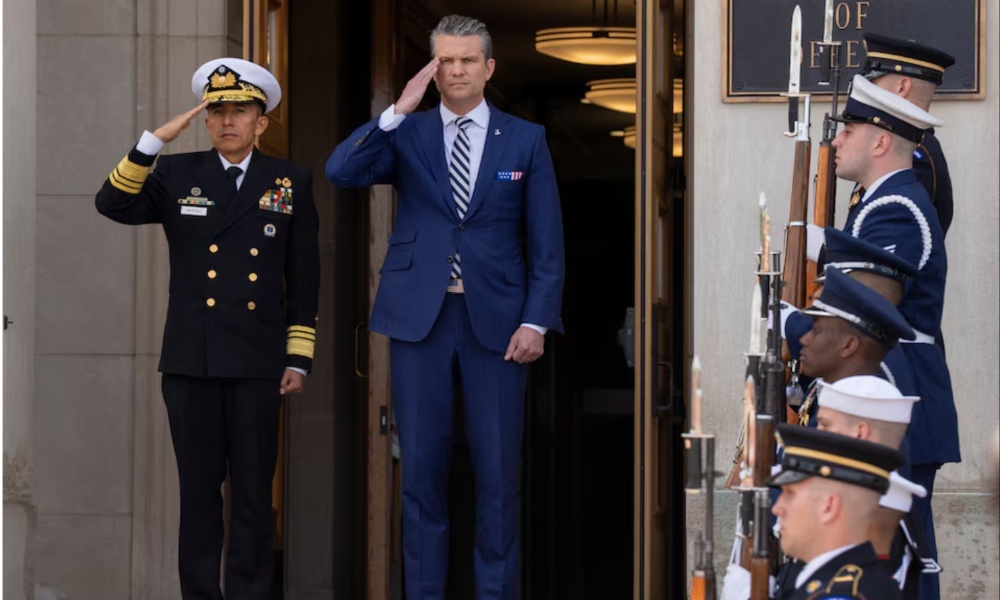
U.S. Defense Secretary Pete Hegseth shared details of a March attack on Yemen’s Iran-aligned Houthis in a message group that included his wife, brother and personal lawyer, a source familiar with the matter told Reuters on Sunday.
The revelations of a second Signal chat raise more questions about Hegseth’s use of an unclassified messaging system to share highly sensitive security details and come at a particularly delicate moment for him, with senior officials ousted from the Pentagon last week as part of an internal leak investigation.
In the second chat, Hegseth shared details of the attack similar to those revealed last month by The Atlantic magazine after its editor-in-chief, Jeffrey Goldberg, was included in a separate chat on the Signal app by mistake, in an embarrassing incident involving all of President Donald Trump’s most senior national security officials.
The person familiar with the matter, who was speaking on condition of anonymity, said the second chat included about a dozen people and was created during his confirmation process to discuss administrative issues rather than detailed military planning.
The chat included details of the schedule of the air strikes, the person said.
Hegseth’s wife, Jennifer, a former Fox News producer, has attended sensitive meetings with foreign military counterparts, according to images the Pentagon has publicly posted.
During a meeting Hegseth had with his British counterpart at the Pentagon in March, his wife could be seen sitting behind him.
Hegseth’s brother is a Department of Homeland Security liaison to the Pentagon.
The Trump administration has aggressively pursued leaks, an effort that has been enthusiastically embraced by Hegseth at the Pentagon.
Pentagon spokesperson Sean Parnell, without evidence, said that the media was “enthusiastically taking the grievances of disgruntled former employees as the sole sources for their article.”
“The Trump-hating media continues to be obsessed with destroying anyone committed to President Trump’s agenda. … We’ve already achieved so much for the American warfighter, and will never back down,” Parnell said in a statement on X.
White House spokesperson Anna Kelly said that “recently fired ‘leakers’ are continuing to misrepresent the truth to soothe their shattered egos and undermine the President’s agenda.
Democratic lawmakers said Hegseth could no longer stay in his job.
“We keep learning how Pete Hegseth put lives at risk,” Senate Minority Leader Chuck Schumer said in a post to X. “But Trump is still too weak to fire him. Pete Hegseth must be fired.”
Senator Tammy Duckworth, an Iraq War veteran who suffered grave injuries in combat in 2004, said that Hegseth “must resign in disgrace.”
A U.S. official at the Pentagon questioned how Hegseth could keep his job after the latest news.
The latest revelation comes days after Dan Caldwell, one of Hegseth’s leading advisers, was escorted from the Pentagon after being identified during an investigation into leaks at the Department of Defense.
Although Caldwell is not as well known as other senior Pentagon officials, he has played a critical role for Hegseth and was named as the Pentagon’s point person by the Secretary in the first Signal chat.
“We are incredibly disappointed by the manner in which our service at the Department of Defense ended,” Caldwell posted on X on Saturday. “Unnamed Pentagon officials have slandered our character with baseless attacks on our way out the door.”
Following Caldwell’s departure, less-senior officials Darin Selnick, who recently became Hegseth’s deputy chief of staff, and Colin Carroll, who was chief of staff to Deputy Defense Secretary Steve Feinberg, were put on administrative leave and fired on Friday. – REUTERS
-

 Sport5 days ago
Sport5 days agoAfghanistan qualify for U19 Cricket World Cup 2026
-

 Regional5 days ago
Regional5 days agoDeadliest US strike in Yemen kills 74 at oil terminal, Houthis say
-
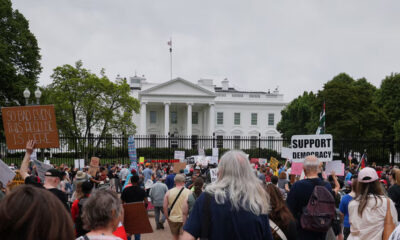
 World4 days ago
World4 days agoThousands of protesters rally against Trump across US
-
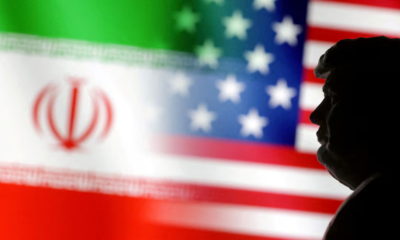
 World4 days ago
World4 days agoIran, US end nuclear talks in Rome, agree to meet next week
-

 Latest News4 days ago
Latest News4 days agoPolio vaccination campaign launched in Afghanistan
-

 International Sports4 days ago
International Sports4 days agoIPL 2025: 14-year-old Vaibhav Suryavanshi becomes youngest IPL player
-

 International Sports2 days ago
International Sports2 days agoIPL 2025: Robo-Dog ‘Champak’ explained
-
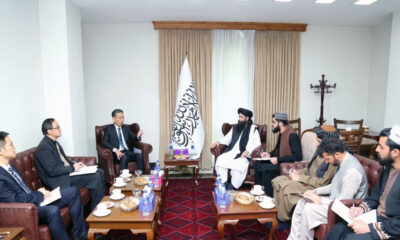
 Latest News3 days ago
Latest News3 days agoChina invites various Afghan delegations to attend Shanghai forums


